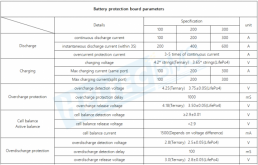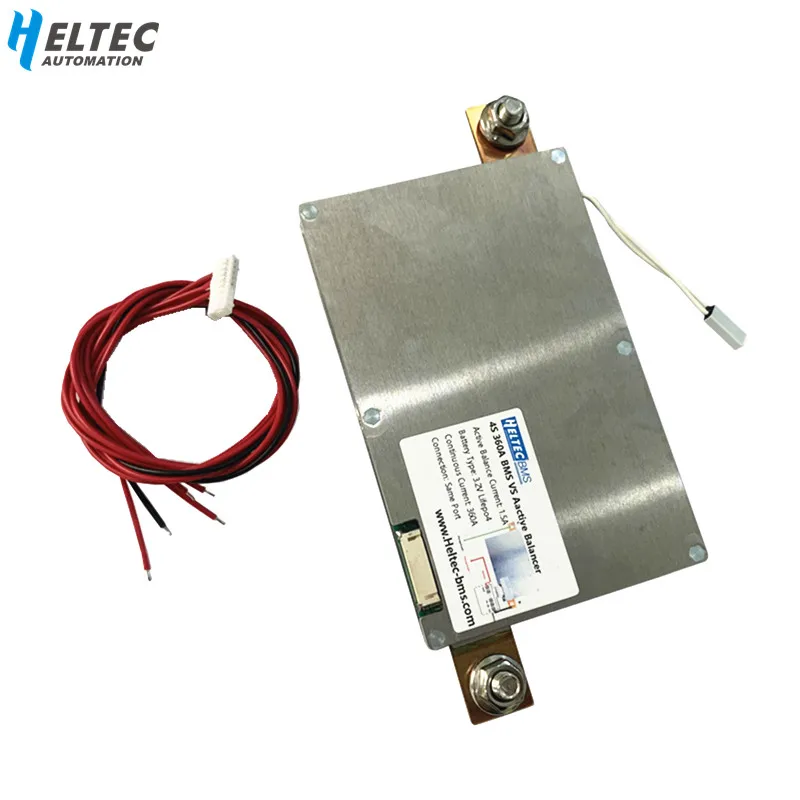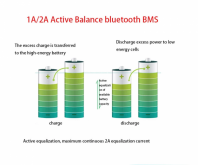I didn't realize Heltec has another BMS with active balancing. But like Dzl said, that one isn't a smart BMS so no bluetooth and not user configurable.
You can order it with all of the options permanently set to your requests. That is probably ok for some people.
I bought the smart Heltec 200A BMS with 2A active balance. I like it so far but I'm only working with a 12A 48V power supply now and I don't plan to put over 100A through the BMS.
My current thinking is that while Bluetooth monitoring would be nice, it’s just one more chip that can fail, and I can wire in a parallel monitoring port for a BattGO monitor for lower incremental cost (and better fault-tolerance).
User-configurability is more interesting but sounds like a headache and I’m not convinced it’s worth the trouble (for me).
Of all the parameters, it is probably the cell balance detection threshold of 2.9V that has me most concerned.
I’m only interested in top-balancing and don’t see much benefit is boosting weak cells near the bottom of the discharge curve. That’ll just cause the weak cell(s) to top out more quickly when charging and won’t gain much of anything in terms of extended capacity.
My current passive BMS only balances above 3.55V so it is not active during a discharge cycle and only kicks-in well above the ‘knee’ when charging.
At a balance cut-off of 2.9V, any weak cells will be getting boosted through most of their discharge cycle and then that boosted charge will need to be pulled out and redistributed during the charge cycle.
So I may ask the manufacturer if I can get the BMS with balance Turn-On set to a higher voltage like 3.55V or 3.5V.
From my point of view (and as others have already stated), LiFePO4 battery capacity will fundamentally be limited by the capacity of the weakest cell.
The first 70Ah LFP battery I built has a weak cell that is the first to discharge, but what I’ve seen is that over time/cycles, that cell strays from being the first to recharge to lagging the stronger cells ;which means the battery is losing available capacity).
So my main goal with Active Balancing is to boost any weak cells to be balanced with the stronger cells at the end of a charge cycle.
Is there any specification for how much of a voltage difference is required between the lowest cell and the highest cell to engage Active Balancing?






